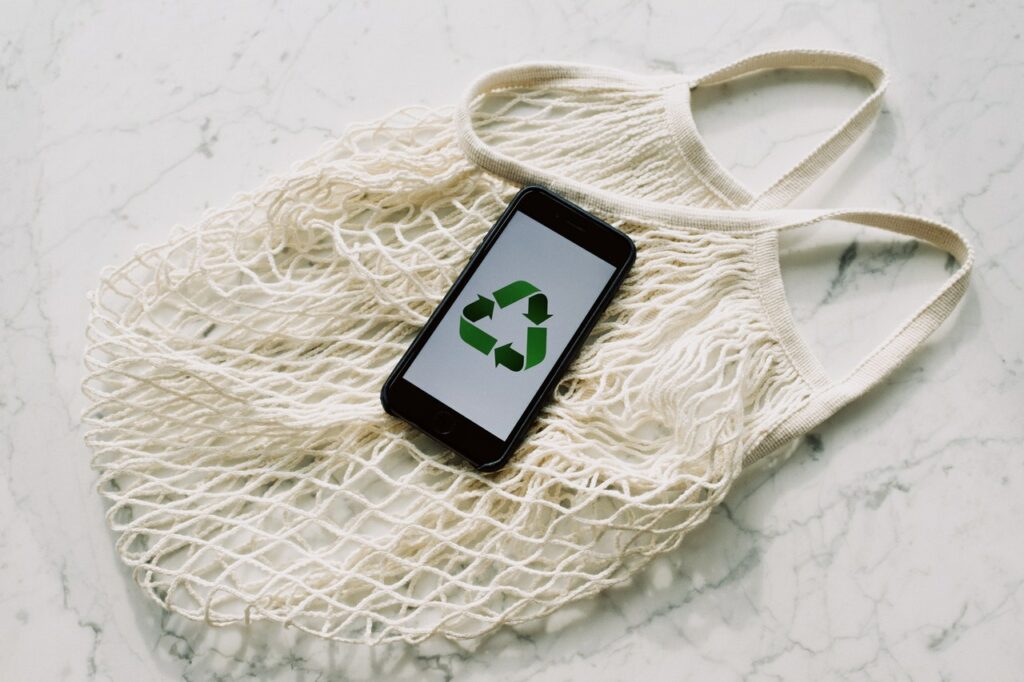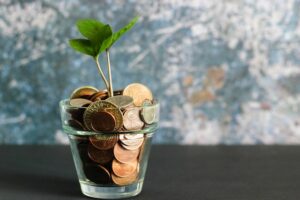This article is part of the “How to Be a Green Changemaker?” series on the Zerwaste blog. In this post, we will look into the emerging EU regulations and try to understand the role of public authorities in creating a framework for companies to conduct their business responsibly.
Welcome back to the green changemaker Journey!
When you start your transition, we know how hard it can be to define what your priorities should be. Of course, there are specificities directly dependent on your industry, the size of your company, or your level of maturity. However, before evaluating your roadmap, it is key to make sure you understand what the legal requirements are (and will be) regarding sustainability.
In 2011, the European Commission has defined Corporate Social Responsibility (CSR) as initiatives led by companies to take responsibility for their impact on society.
To be socially responsible, a company should:
- Integrate social, environmental, ethical, consumer, and human rights concerns into their business strategy and operations, and
- Basically, follow the law.
In this article, we will focus on what has been done at the European level and how companies must adapt to follow the law. We will get back later how to build a CSR strategy as it brings multiple benefits in terms of risk management, cost savings, access to capital, customer relationships, HR management, sustainability of operations, ability to innovate, and eventually profit.
CSR is nowadays clearly promoted (on a voluntary basis) in the EU, as is the case with the UN 2030 agenda for sustainable development. The countries of the United Nations have adopted a set of 17 goals to end poverty, protect the planet and ensure prosperity for all. They are called the Sustainable Development Goals. Since 2015, the SDGs have been used as a reference to build a sustainable future with detailed targets and follow-up indicators. The SDGs are not binding as such for companies, but they were used to define numerical targets for the UN 2030 agenda.
Lately, the EU has started to include those targets and the CSR principles in the blueprint of mandatory norms and regulations to make sure they all contribute to the same objectives. Today, we focus on EU regulations impacting two aspects: the way you do business and the impact it has on the financial market.
1) The way you do business
In 2019, the EU has developed a set of policies aiming to transform the EU into a climate-neutral and resource-efficient economy by 2050. The European Green Deal (EGD) is based on 8 pillars:
- A higher level of EU climate ambition for 2030 and 2050
- Clean, affordable, and safe energy supply
- Preservation and restoration of ecosystems and biodiversity
- Efficient use of energy and resources in construction and renovation
- Acceleration of the transition to sustainable and smart mobility
- Achieve zero pollution in an environment without toxic substances (Zero Pollution Action plan)
- Industry mobilization for a clean and sustainable economy (Circular Economy Action Plan)
- Achievement of a fair, healthy, and environmentally friendly food system (F2F strategy)
Nowadays, private buyers want more and more responsible products compliant with Green Deal principles: recycled packaging, recycled textiles, more information about sustainability aspects…
In response to this market demand and the global climate emergency, the European Climate Law has been published in 2021 and 2% of Europe’s GDP will go into greening the economy and it will, of course, involve a reorganization of the industry. It will most probably increase short-term costs, but also increase the competitivity in the long term.

Some specific sectors are directly involved in the fight for climate neutrality, such as energy, construction, and transportation, but every company has a role to play to contribute to the action plans:
The first pillar with high ambition is the “Zero Pollution Action plan.” The stakeholder platform has been launched at the end of 2021 and unfortunately, even at this stage, no binding actions to clean up Europe’s air, water, and soil have been proposed. However, companies must be ready to work on those topics that will most probably come up in the coming years:
- Chemical strategy for sustainability to protect the environment against hazardous chemicals.
- Zero pollution action plan for water, air, and soil to prevent, remedy, and report on pollution.
- Revising measures to address pollution from large industrial installations – to ensure they are consistent with climate, energy, and circular economy policies.
- Farm to Fork Strategy (F2F)
Since the launch of F2F in 2020, all food chain actors are involved in (non-)regulatory initiatives to build a fair, healthy, and environmentally friendly food system with the objectives to:
- Reduce food waste.
- Ensure that there is a sufficient and affordable supply of food for its citizens.
- Guarantee that farmers receive a fair price for their products; and
- Make sure the EU remains competitive on a global scale.
To achieve those objectives, the EU has defined a set of short-term actions, including:
- Revision of existing regulations for food and agriculture.
- Creation of new rules, including the EU Code of conduct on Responsible food business and marketing practices.
- Improvement of coordination tools within the EU.
- Implementation of a sustainable food labeling system.
- Action Plan for Organic Agriculture 2020-2026, with new organic legislation entering into force at beginning of 2022 impacting production, labeling, and (group) certification for small farmers.
In the long term (3 to 10 years), other impact regulations might enter into force, such as:
- The action plan for integrated nutrient management to reduce pollution from fertilizers which will reduce the type and amounts of chemical fertilizers used in agriculture.
- The EU strategy on Algae (blue bioeconomy);
- The Biopesticides approval criteria for microbial active substances;
- The new common agricultural policy transition towards sustainable agriculture and forestry.

As the food system depends on global supply chains, all this will directly impact the business model of enterprises under a conventional agriculture regime, but it will also increase cooperation with countries outside the EU: food R&D, agroecology, sustainable use of biodiversity, land governance… That’s why the European Commission has published a list of Green Alliances and Partnerships.
To reduce pressure on natural resources, it will be necessary to transform the design, production, and consumption of products so that no waste is produced, in various sectors such as packaging, technology, vehicles, and textiles. The objectives of the CEAP are to:
- Make sustainable products the norm in the EU.
- Empower consumers and public buyers in the EU.
- Focus on the sectors that use the most resources and where the potential for circularity is high, including packaging, plastics, and textiles.
- Ensure less waste.
- Make circularity work for people, regions, and cities.
- Lead global efforts on a circular economy.
Since its adoption in 2020, several initiatives have been taken such as the directive on single-use plastics or mandatory Eco-design requirements for energy-related products. Those initiatives already have a direct impact on businesses, but in 2022 a new package of measures has been adopted:
- Sustainable Products Initiative, including the proposal for the Eco-design for Sustainable Products Regulation
- EU strategy for sustainable and circular textiles
- Proposal for a revised Construction products Regulation
- Proposal for empowering consumers in the green transition
- Revision of the Industrial Emissions Directive
- Revision of the European Pollutant Release and Transfer Register (E-PRTR)
And the best is yet to come with new initiatives still in the pipeline for the end of the year:
- Legislative proposal for substantiating green claims made by companies
- Review of requirements on packaging and packaging waste in the EU
- New policy framework on bio-based, biodegradable, and compostable plastics
- Measures to reduce the impact of microplastic pollution on the environment
Of course, at this stage, those are mainly proposals and directives, but we could expect laws and regulations coming up in the next 3 to 10 years which will directly impact the way companies should do business, starting with those 2 examples:
For instance, to contribute to the third pillar of the EGD, the European Commission has proposed 2021 a new law to stop deforestation and minimized our impact on forests worldwide. Companies selling commodities related to deforestation or forest degradation, e.g., soy, palm oil, or beef products, will have to be “deforestation-free” before being allowed to place them on the European market. This proposal should be validated in the coming years.
On a slightly different topic than the EGD, in February 2022, the EU approved a proposal for a Directive on corporate sustainability (environmental and human rights) due diligence. We could expect a new law in 2023 as the EU member states have been given time to include it in their national legislation.
In the meantime, regulations based on those directives are implemented at the regional level.
A good example is “Circular Wallonia » which includes ten ambitions translated into sixty specific measures to reach the targets defined in the Circular Economy Action plan.
Waste management is the fourth pillar of “Circular Wallonia” and its focus is on waste prevention and valorization as those are powerful levers of the circular economy.
Industrial waste management has already been identified as a vector of economic development in the “Plan Wallon des Déchets-Ressources” adopted in 2018. They have developed new collecting approaches for industrial waste, but also for organic waste with a focus on synergies between companies and internal efforts to reduce the amount of waste left at the dump to a maximum of 10% by 2030. There is also an extensive focus on packaging with a cooperation agreement between the three regions in 2020 to prevent and manage packaging waste.
With all the existing regional regulations and the European laws coming, it is, therefore, better for enterprises to already integrate those principles as they will be directly impacted in the future by regulations impacting how products are:
- Made with laws on creating sustainable products which minimize waste throughout the life cycle,
- Packaged with laws limiting how much and what type of packaging can use for your products; and
- Reported increasing demands for more information on processing and production practices to better inform consumers and buyers on their purchasing choices.
2) The impact it has on the financial market

It is clear that the EGD will require enterprises to provide more information about their products, but it will also give access to better tools and mechanisms, such as the digital product passport. It is an opportunity to improve the processes in a harmonized way and to be able to comply with standard requirements (instead of multiple requests) within (and outside) Europe. One example is the Carbon Border Adjustment Mechanism (CBAIM) which aims to discourage carbon leakage; i.e. transfer of processes to countries where GHG emissions regulations are less strict; by putting a carbon tax on EU imports. The CBAIM will allow products to have a comparable price to those produced under the EU’s carbon pricing rules. Even if the first focus will be on fertilizers, iron, steel, and energy, other goods could be included at a later stage.
All those information on ESG (environmental, social, and governance) factors is important for investors. According to the 2020 EY global investment study, 98% of investors conduct a formal or informal review of non-financial disclosures.
In the frame of the Sustainable Finance Roadmap 2022-2024 and in compliance with the EU Green Deal, the EU’s sustainable finance strategy has been developed, with ESMA making sure that financial markets integrate environmental, social, and governance (ESG) factors across its core activities in more than 100 industries (spanning manufacturing, transport, insurance,…).
The green taxonomy is the base of the sustainable finance regulation, but there are 2 additional key rule sets: the Sustainable Finance Disclosure Regulation (SFDR) and the Corporate Sustainability Reporting Direct (CSRD). In short, The EU Taxonomy is a dictionary that defines what is sustainable and what is not. This classification system will help investors to distinguish truly sustainable activities from greenwashing based on six environmental objectives:
- Climate change mitigation
- Climate change adaptation
- The sustainable use and protection of water and marine resources
- The transition to a circular economy
- Pollution prevention and control
- The protection and restoration of biodiversity and ecosystems
Using the green taxonomy, financial market participants and financial advisers (e.g., asset managers, pension funds, and insurers) must explain how they determine the sustainability of their investments and how they integrate sustainability risks and impacts in their processes. It’s called the Sustainable Finance Disclosure Regulation SFDR.
Under SFDR, ESG funds will also have to rely heavily on the taxonomy to disclose what percentage of their investments is aligned with the climate objectives from 2022, including the firm’s carbon footprint, board diversity, water management, and controversial weapon exposure. As of 2023, they will have to comply with more disclosure requirements and provide sustainability‐related information concerning financial products on their websites as well as in their fund documentation.
For the first time, as an investor, you will be aware of the ESG risks in a portfolio, and of the greenwashing of financial advice, but what is the impact on the companies which will be evaluated?
Companies must improve the credibility of the information available in their annual report. Following the CSRD, they should provide non-financial reporting taking into consideration how business affects the environment and the community with a focus on social, personnel, environment, human rights, anti-corruption, and anti-bribery topics.
Since the beginning of 2022, CSRD introduces tougher reporting requirements, and audits of ESG-related information, but also transparency on the percentage of revenues in line with the taxonomy. By the end of the year, a new sustainability reporting standard could be expected
The CSRD is the renewed version of the current NFDR (Non-Financial Reporting Directive), but the scope is extended from around 12.000 large and listed companies to 50.000 large or listed companies on regulated markets, and smaller companies will most probably follow.
One of the biggest challenges is the lack of comparison points. That’s why all those EU regulations lead to new standards, certifications, or codified processes (ISO 14001 or ISO 26000 standards, environmental management systems, carbon footprint assessments, water footprint assessments, ISO 9001 quality systems, but also ethics charters and committees) which could be used by companies to engage in sustainable development or CSR approach in a concrete, precise and measurable way.
Those standards could be seen as real opportunities to transform companies from within and improve their performance because of efficiency gains, gains in transparency and traceability, and improved relations with stakeholders.
In addition to that, ESG benchmarks have been developed to evaluate the performance of sustainability measures within companies and make sure they work towards reducing environmental impact. In 2019, as part of the Regulation on the EU Climate Transition Benchmarks, the EU has created two new categories, or labels, of climate-related benchmarks:
- the EU climate transition benchmark (EU CTB) which brings the resulting benchmark portfolio on a decarbonization trajectory; and
- the EU Paris-aligned benchmark (EU PAB) which brings the resulting benchmark portfolio’s carbon emissions in line with the Paris Climate Agreement target.
In the current situation, those are the main topics at stake but of course, the situation might evolve and differ depending on your industry and where you are located. We hope this article has already given you powerful insights into the implications of EU regulations for your business and we will get back on the impact of labels and certifications in a future article. We hope it helped you understand the regulatory framework in Europe related to the environment.



